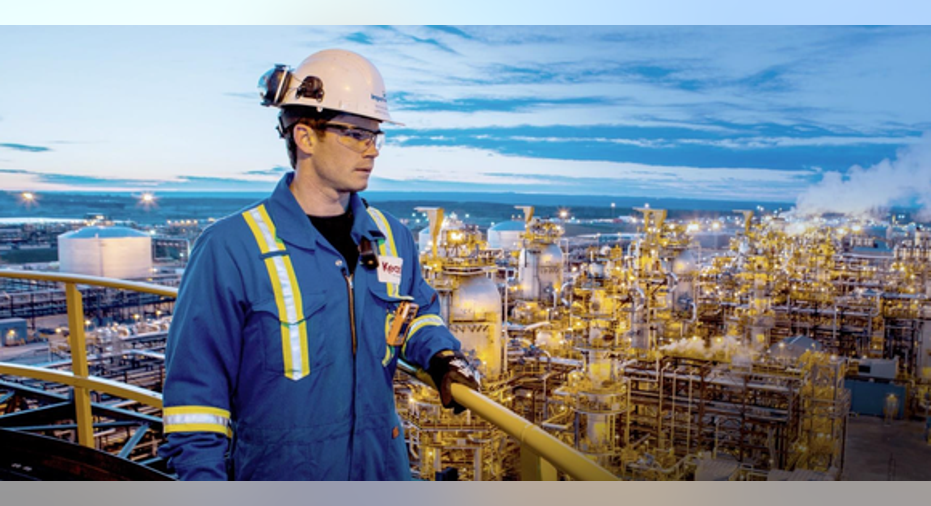Is Imperial Oil the Next ExxonMobil?

A BABY EXXON? IMAGE SOURCE: IMPERIAL OIL INVESTOR PRESENTATION.
With a market cap of $28 billion and only $6.3 billion in net debt, Imperial Oil has had no problem funding its operations since the industry downturn began roughly 24 months ago. Last month it became even better positioned, following the $2.8 billion sale of its497 Esso gas stations.
With more than ample financial backing, Imperial is entering a stage in company history where capital allocation is key. Will it focus on capital expenditures, dividends, share repurchases, or acquisitions? Fortunately, ExxonMobil , largely regarded as the industry's best capital allocator, has an incentive to turn Imperial into the next Exxon.
A watchful parentWith a 69.7% ownership stake, Exxon has fully imprinted its strategy onto Imperial. Imperial's CEO was a oncea vice president at Exxon, along with several other board members.Its biggest lesson: Focus on capital efficiency while returning capital regularly to shareholders through dividends and buybacks.
If you look at Imperial's return-on-capital metrics, it clearly stands out among an industry of so-so results. Over the past five years, Imperial has averaged a return-on-capital rate of nearly 20%. Competitors such as Cenovus Energy,Suncor Energy(NYSE: SU), andHusky Energyaverage closer to 10%. Imperial's impressive results stem from its disciplined investment strategy. From 2010 to 2015,production rose from 250 thousand barrels per dayto over 400, all while dropping production costs.
Today, its cash unit costs are roughly $25 a barrel. A culture of cost discipline allowed Imperial to turn a profit every quarter last year throughout the height of the downturn, something few companies of its size were able to do. For comparison, Suncor Energy, a close competitor with similar oil sands and refining interests, posted a $1.5 billion loss in the fourth quarter alone.
What has Imperial done with all this cash generation? In the past 10 years, it's reinvested about $56 billion into projects that meet its strict capital return parameters. Over the same time period, it's also returned roughly $12 billion to shareholders, nearly half its current market cap.Massive share buybacks and a focus on sustainable dividends is another trick out of Exxon's playbook. The company hasn't missed a dividend payment in over 100 years, with 20 years of consecutive growth.
IMAGE SOURCE: IMPERIAL OIL INVESTOR PRESENTATION.
Diversified operating model is criticalPerhaps Exxon's biggest gift to Imperial is its diversified business strategy.
Because of its sizable downstream and chemicals segments, Exxon turned an $18.1 billion profit last year even as its upstream segment experienced a 75% dip in profitability. It's possible that these ancillary segments will becomea driving force for Exxon should oil prices remain depressed.
Imperial has similar advantages. Because of its own chemicals and downstream divisions, it can fund expansion projects even when oil prices collapse. It's made more than $7 billion from these two segments over the past five years, with the past 12 months generating record profitability. That's a huge advantage when competitors are struggling for cash.
Is Imperial the next Exxon?On nearly every metric, Imperial is already a mini-Exxon. Its capital-allocation strategy has outperformed competitors over the long term while its focus on dividends and share buybacks has resulted in consistent capital appreciation for shareholders. Since 2000, shares are up 477%, outpacing Exxon's return of just 231%.
If you're interested in an oil and gas major such as ExxonMobil, consider its miniature clone, Imperial Oil. With its smaller size and similar strategy, Imperial should have more opportunities to compound capital at attractive rates than its $364 billion big brother.
The article Is Imperial Oil the Next ExxonMobil? originally appeared on Fool.com.
RyanVanzo has no position in any stocks mentioned. The Motley Fool owns shares of ExxonMobil. Try any of our Foolish newsletter services free for 30 days. We Fools may not all hold the same opinions, but we all believe that considering a diverse range of insights makes us better investors. The Motley Fool has a disclosure policy.
Copyright 1995 - 2016 The Motley Fool, LLC. All rights reserved. The Motley Fool has a disclosure policy.



















